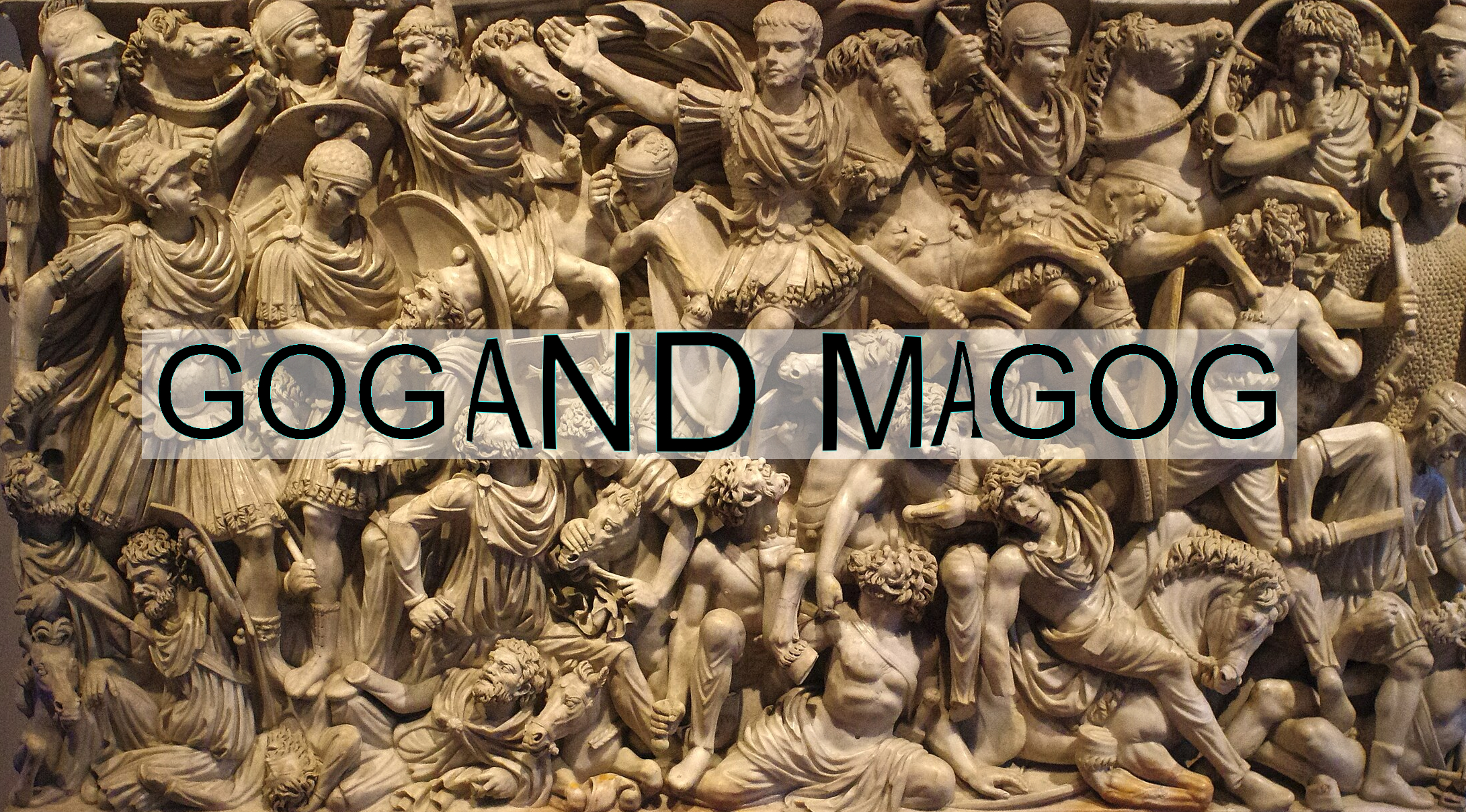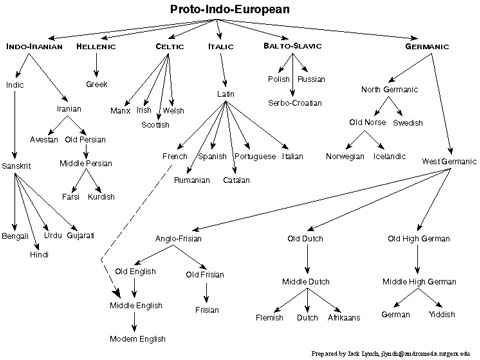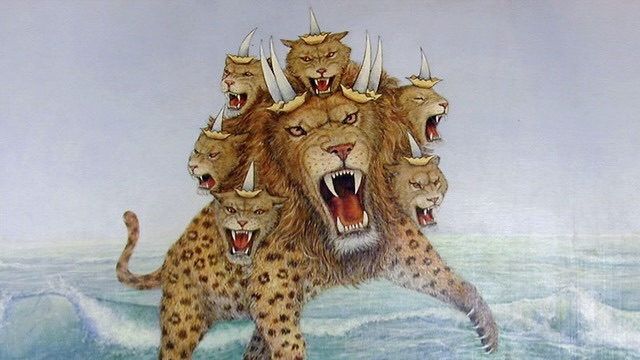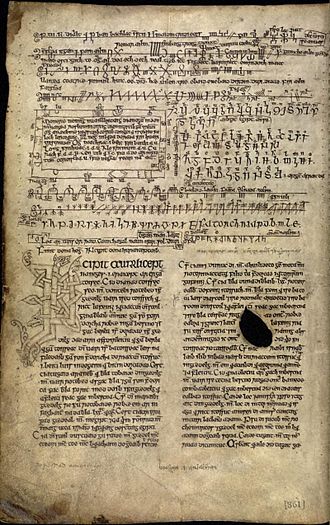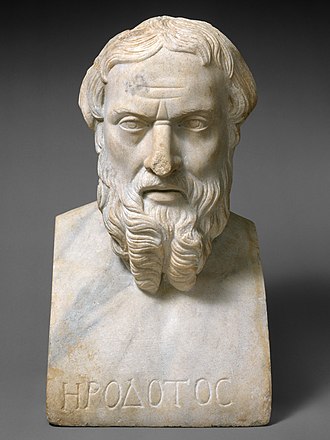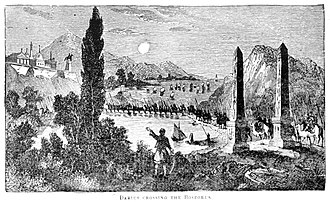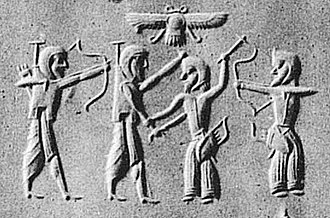When The World Were Divided – Identifying Magog.
See all the parts to find out who Gog and Magog is:
Part 1: Why is God targeting the sons of Japhet?
Part 2:Human development after the flood – and its relevance today.
Part 3: When The World Was Divided – Identifying Magog!
Part 4: Magog – The provoker in the end times
Extra: Explaining haplogroups

To understand human migrations from the Biblical perspective, we need to disregard the messy approach of evolutionists, who have the wrong dates and events as their framework. They also place the area where all humans spread from the wrong places, like in the Asian steppes and Africa. They also place human development in phases, while humans have always lived in different phases simultaneously.
In biblical reality, there was a flood. After this flood, volcanos started popping up all around the world, creating a particularly cold atmosphere in the north which evolutionists call the ice age but did not last for thousands of years as they claim. The ice age is fairly young and belongs to a time after the flood with a colder climate. Once the ice was settled, it stayed for some time. When it got warmer, the oceans rose somewhat, and cities that had been built around the coasts ended up underwater, as we can see in several places all over the world.
One of the larger areas in the north submerged underwater is the recently discovered Doggerland, a landmass once connecting England with Northern Europe. A human-built wall is also found ten kilometers off the German northern coast in the Baltic Sea. Around the Mediterranean are ancient cities discovered underwater close to shore. For instance, the Persian Gulf was a dry-land river valley and sea level rose during the glacial meltdown. Because of cities drowning, it shows that the water levels rose sometime after Babel when people had already spread.
The point is, for many years, the tribes of Japhet did not go as far north as we are today while the glaciers were still intact. At first, after the flood, the north was what is today called Armenia, Georgia, Crimea, Ukraine, and so on.
In addition to telling us Japhet’s children settled in the north, it tells us Japhet’s sons went along the coast and to the islands as well. Japhet’s son Javan is strongly connected to what we now call Western Turkey, Northern Greece, and its islands.
The book of Jubilee claims that Noah divided the world into three parts, one for each of his three sons. Japhet went north and west. Shem East and Ham South.
““10 And for Javan came forth the fourth portion every island and the islands which are towards the border of Lud. 11 And for Tubal there came forth the fifth portion in the midst of the tongue which approaches towards the border of the portion of Lud to the second tongue, to the region beyond the second tongue unto the third tongue. 12 And for Meshech came forth the sixth portion, all the region beyond the third tongue till it approaches the east of Gadir. 13 And for Tiras there came forth the seventh portion, four great islands in the midst of the sea, which reach to the portion of Ham [and the islands of Kamaturi came out by lot for the sons of Arpachshad as his inheritance]. 14 And thus the sons of Noah divided unto their sons in the presence of Noah their father, and he bound them all by an oath, imprecating a curse on every one that sought to seize the portion which had not fallen to him by his lot. 15 And they all said, ‘So be it; so be it ‘ for themselves and their sons forever throughout their generations till the day of judgment, on which YAHWEH ALMIGHTY shall judge them with a sword and with fire for all the unclean wickedness of their errors, wherewith they have filled the earth with transgression and uncleanness and fornication and sin.”
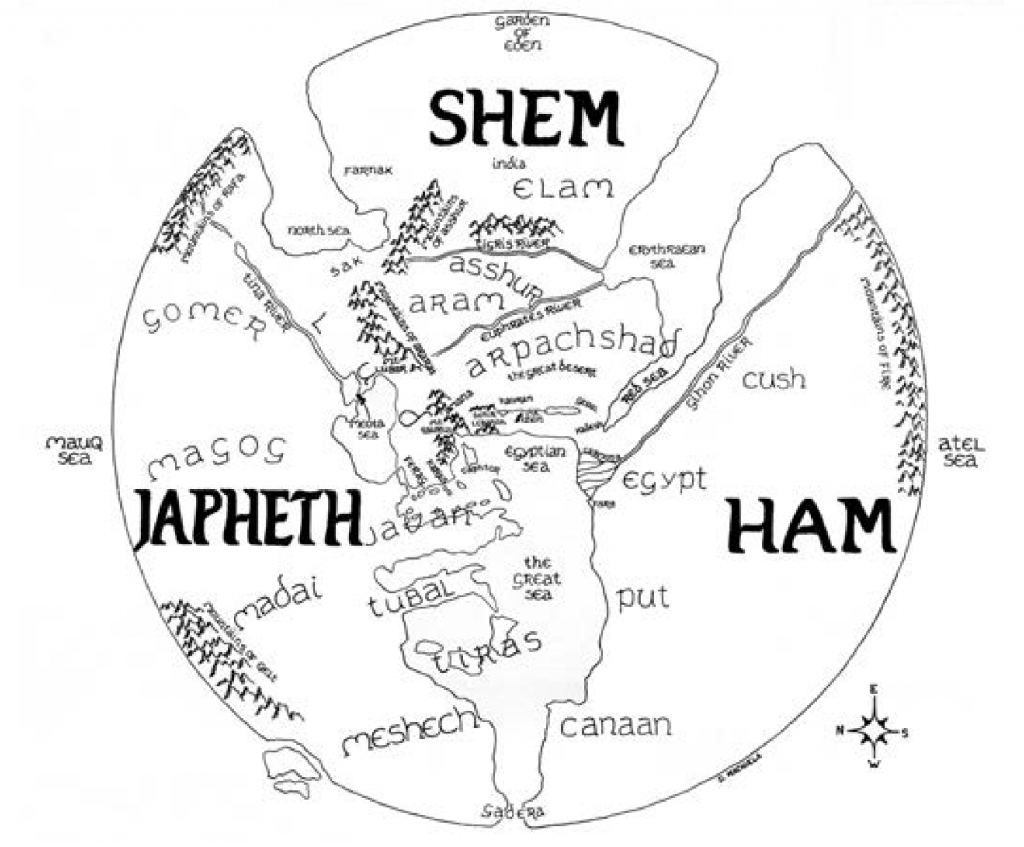
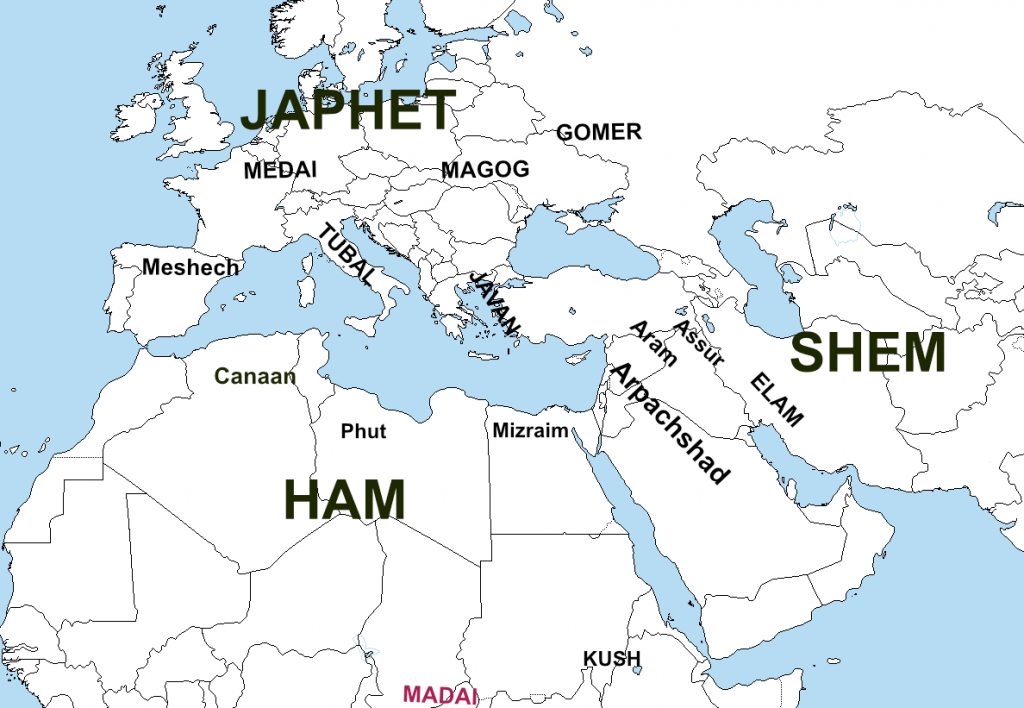
According to the book of Jubilee, Japhet’s sons ended up covering most of what we today know as Europe, Russia, and the Caucasus. From here they spread further north, east, and west. It should therefore not come as a surprise that all European languages are from the same proto-indo European language stem tree (except Turkish). That includes Latin, Armenian, Slavic, Russian, Germanic, Greek and even Iranian. Among the first in southern and western Europe were the Greeks, the Gallics, the Celts, and the Italic peoples. All of those languages come from the proto-indo European language. Then much later germanic tribes dominated in central Europe. The population of Europe happened over several immigration pulls, mostly due to war, displacement, and resources, everyone being pushed further into their lands.
Medai and Canaan did not want their lands.
The Book of Jubilee also claims that Medai came to his land and returned east. He did not like it and begged to be given a portion from Shem and a portion from Ham. Medai was at that time married to the sister of Arpachsad. It says: “And Japheth and his sons went towards the sea and dwelt in the land of their portion, and Madai saw the land of the sea and it did not please him, and he begged a (portion) from Ham and Asshur and Arpachshad, his wife’s brother, and he dwelt in the land of Media, near to his wife’s brother until this day. 36 And he called his dwelling-place, and the dwelling-place of his sons, Media, after the name of their father Madai” (Jubilees 10)
The book of Jubilee tells us Medai with a following explored the land already right after Babel, being the first in his land. How long he tarried there and if some were left behind is not known. It seems clear though that Medai came to the area while it was still very cold and the glaciers of Northern Europe were still intact. Irish traditions about a flood might give us another answer to why he begged to stay in the East with his cousins.
The land at the North Sea and Atlantic Ocean therefore was rejected by Medai and left largely to his siblings tribes. And we will investigate who went there as it is of great importance when understanding the Gog and Magog War. Traditions might confirm that it was not Medai who came and stayed.
Illustration: Medai rejected his portion in Europe and settled among Shem and Ham in what is today called Northern Iran. This might also explain why there is an Indo-European language there. He appears to also have received a portion from Ham around modern-day Chad.

It is not impossible that God has left us clues to understand the main spreading of what we today call “haplogroups” which points to mutual forefathers (and mothers). But evolutionists do with genetic mutations as they do with carbon dating. They are not considering changes when it comes to mutation rates.
Genetic paternal haplogroup trees
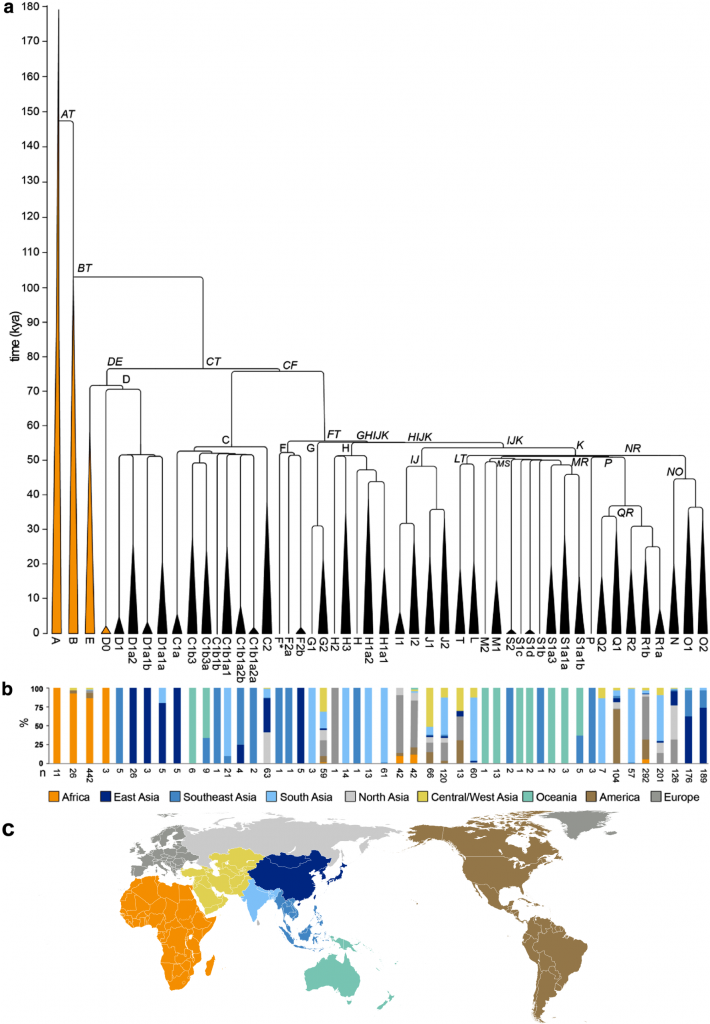
The first generations after Flood/Babel are those who gave us the different paternal and mitochondrial ancestry and their mutations which again can help us see who is genetically from which of Noah’s sons. The first brothers had the same genes as Noah of course and likely also their children. Living for hundreds of years, their children could also get different mutations even though they come from the same father. Because all the children of Noah’s sons had a similar Y-DNA, it also means that a son coming from one of the brothers may resemble a mutation coming from another brother. Two sons born a hundred years apart from the same father may have a larger difference in mutation. When the newest research shows mutations can happen faster in one place compared to other places, it also creates questions if the haplogroups first considered oldest, really are older. This will also, as in the study on Iceland, impact how closely related they appear. Noah and his sons can not be seen on haplogroup charts at all, as they all had the same haplogroup. The mutations are from their descendants, not them. Early haplogroups closer might be “cousins” not “brothers”, and some who appear further down the line might be brothers and not “cousins”. These considerations are often not taken when evolutionists and even some creationists investigate genetic haplogroups.
The book of Jasher and the book of Jubilee – who tells the truth if any?
The two books talk about what son of Noah went where. However, they, suspiciously, disagree on where Magog went. As we first mentioned, Satan has a motive behind confusing this topic. And so we have to ask ourselves, which one of these books tells the truth about Magog? And does ancient historical record confirm one above the other?
One book seems to agree with the false prophecies regarding Modern Israel and points toward Russia (The Book of Jasher) as Magog. The other points to the Christian nations as descendants of Magog (The Book Of Jubilee).
The book of Jasher is quoted in scripture. Both the book of Joshua and the book of Samuel give a reference to the book of Jasher. This might seem to prove its authenticity. However, the book of Jasher was lost and was not quoted by anyone in the Bible since or after. It did not resurface again until the 16-17th centuries. The book had been lost for around 2500 years and no one can tell for sure how it was found or why it suddenly resurfaced. Was it the authentic book that was found or did someone take advantage that the bible mentioned such a book and presented a false version to push an agenda?
In contrast to the Book of Jasher, the Book of Jubilee was found among the Dead Sea Scrolls and confirmed as an authentic document with deep roots. It can be questioned if the book is inspired or not, however, a historical record does not necessarily have to have a divine authorship to be truthful regarding history. The Jewish historian Josephus rejected Christ, yet did to the best of his ability record history, even mentioning Jesus. The book of Jasher was never found among the Dead Sea Scrolls. The pre-first-century Jews who carefully preserved all Jewish books did not have it. It is not referred to by early Christians, in any early Christian groups, or among any ancient Jewish collections. Its reappearance is shrouded in mystery. The Book of Jasher appeared in the middle of the Reformation movement, and the Jesuit counter-reformation era. There is no way currently to affirm the authenticity of the book of Jasher now in circulation.
The case of the book of Jubilee is quite different. It was found among the Dead Sea Scrolls and among pre-first-century Jews. It was continuously quoted from after the time of Samuel, during the apostolic age, was among manuscripts preserved by early Christian groups, and so on.
Having to choose which one to trust, the Book of Jubilee is winning on all accounts. The book Jasher gives a similar explanation to Magog and Gomer as the book of Jubilee, but switches their places, placing Gomer in Western Europe and Magog in what is today known as Russia. While Jubilee places Gomer in what is today Russia and Magog in Europe.
As you can see, the change is vital when studying the Gog and Magog War. It will change the meaning of the war and what the sins of Magog are.
This change also helped the “false prophecies” pointing to Russia as the main enemy in the end times. Not just by anyone, by the same as Jubilee claims is the real Magog.
The book of Jubilee does not just place Magog in Europe, it also places the other two “bad guys” Meshech and Tubal in what is now the Latin-speaking part of Europe. The three descendants of Japhet God are especially upset with also is the Roman beast and its northern divisions (horns). And because it is “the horns” that reign in the end times, Magog is in these horns. Not only in Europe but the USA, where these tribes moved to. Leaving us with the USA and Europe as the Biblical Magog. But first, we need to see if Magog really took over Medais territory in Europe.
Immigration and displacement – is Magog still Magog?
Evolutionists claim Europe was inhabited over several eras by many different groups. However using the Bible, we know this happened over a short period and that people populated the area first small in number more isolated, then great in number in several immigration pulls. The many European tribes are all related as genealogy shows us, languages show us, they are just different branches. First, they interbreed somewhat at Babel, then they became isolated branches, and then they interbred again with their “neighbors”. All speak the Indo-European languages (except Hungarian, and Finnish), with similar haplogroups showing common forefathers. It seems that Magog took the land intended for Medai and spread northward and westward into Europe. History shows us that the people who immigrated to Western Europe came from the territory of Magog, who first started in the area we now know as Ukraine.

Where do historical traditions say they come from?
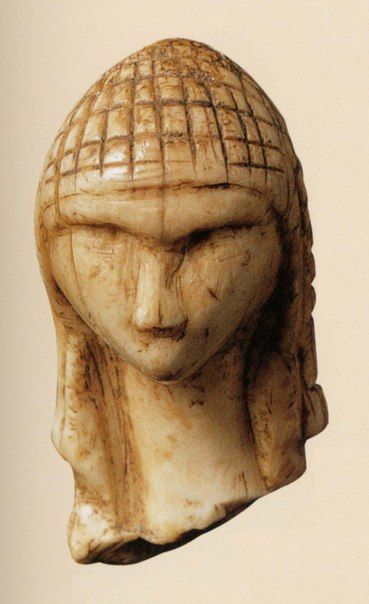
A Celtic historical record called Lebor Gabala Erenn, a book of invasions of Ireland is claimed to be legends and written traditional oral history from prehistoric times. It tells us the following regarding some of the first people to come to Ireland: “Cesair (Cessair), a granddaughter of Noah, together with her father, Bíth, and her followers, are the first to reach Ireland but perish in the flood* shortly after. The next invasion was led by Partholon (possibly Greek), a descendant of the biblical Magog, son of Japhet. After overcoming the Fomor (Fomorii), a race of supernatural beings, Partholon’s tribe assumed control of the country for three centuries, until consumed by plague. Thirty years later, Nemed, another descendant of Magog arrived in Ireland. Allegedly from Scythia, a tribe to the North of Greece, he and his Nemedian tribe deforested many plains in Ireland and (like Partholon) defeated the Fomor in battle”
The Flood here is likely to mean when the water levels rose covering Doggerland and other parts of coastal Northern Europe and not the flood in Noah’s days. The two occasions might be mixed.
The settlement is claimed to first be inhabited by Noah’s granddaughter who went there with her father “Bith”. B was in these ancient languages pronounced V, meaning “Vith” tied to Noah’s son (J)aphet. If true Japhet came to look at the land appointed to his descendants. His daughter died in the flood, but some had to have survived as descendants of Magog fought with them later. “Supernatural beings” might mean they were larger in size and strength. Who was Japhets daughter’s husband we do not know, not even if she was the daughter. As long as she was a female descendant she could have been called a daughter of Japhet. Either she was widowed, or she had a husband from another tribe.
Japhet need not have died in the flood, only escorted family there. This appears to be a sister of Magog and Medai. (The women in the beginning also lived several hundred years).
We might want to revisit the story from Jubilee where Medai traveled to Western Europe and then came back “begging” for a land in the East. This might indicate something scared him off his own land. The flood there could have been that scare, a flood according to the Lebor Gabala Erenn killed at least one tribe, and then Magog was the next tribe to arrive.
Magog traveling all the way to Ireland twice means they either went through the areas Medai was given but rejected or through their own given land north by the Baltic Sea and from there to Ireland (The book of Jubilee said Magog got the land all the way to the baltic sea). This shows that the descendants of Magog came to north-western Europe early on. It also shows that Magog’s descendants reached and inhabited Ireland over several pulls. We know who went to Ireland also went to the territory now called Britain first, as genetics also confirm. and the northern Germanic lands before that.

Another detail from the legends recorded in this book says that other descendants of Magog lived with the Scythians or were part of the Scythians. Historical records show that the Scythians also later spread inward toward western Europe. The Jewish historian Flavius Josephus says the Scythians were descendants and therefore one of the tribes of Magog. The history of Scythians shows they moved from the north of the Black Sea (Ukraine today) into Europe west and east, even to Britain.
When genealogists research Europe we see three big haplogroups in which most of the descendants are linked.
Other Irish sources like Auraicept na n-Éces, claimed to be as old as the 7th century also claim that Ireland was settled by the sons of Magog. The founder Baath mac Magog (Boath) as well as , Jobhath, and Fathochta is said to be three sons of Magog who came to Ireland. Some try to switch it and claim he is from Gomer and even Javan, showing just what a spiritual battle this is. But there are more legends and stories that confirm Magogs presence in Western Europe. The Irish legends also claim the following of Magog’s descendants Fenius Farsaid, Partholón, Nemed, the Fir Bolg, the Tuatha de Danann, and the Milesians are among Magog’s descendants. Of those surviving disasters after Nemed they split up and are said to have “one group flees “into the north of the world”, one group flees to Britain, and another group flees to Greece”.
Scotland is also by several historians claimed to be a descendant of the Scythians:
“Scot (is) the same as Scythian in etymology; the root of both is Sct. The Greeks had no c, and would change t into th making the root skth, and by adding a phonetic vowel we get Skuthai (Scythians), and Skodiai (Skoths)” (Brewer E.C., enl. ed., 1894. Dictionary of Phrase and Fable, p. 1112) Brewer further explains that both the welsh and the Saxons each changed letters leaving us with the word “Scots” (ibid).
Remember many modern historians follow the evolution-theory timeline. We know that the Scythians came later into Europe, but from the Bible, we are told the first scattering of Magog into their lands happened after Babel. We will look at why.
God may give a hint that Magog doesn’t just stay in the inland territory of Europe, but rather takes over also the coastal areas: “And I will send a fire on Magog, and among them that dwell carelessly in the isles: and they
shall know that I am the LORD” (Eze 39:6) The most likely reason God is angry with those “in the isles” is its relation to trade. Even Revelation chapter 18 is mostly a judgment upon the men behind worldwide trade. The coast has always been desirable to settle.
Baath mac Magog is described as being from Scythia, and the Goths, or the Gaedil, showing a link between the Germanic-slavic tribe of the Goths and Britain. Other historical records show the Goths spread to both West and Eastern Europe, even down to Rome and Spain. Genetically speaking, Magog seems to have mingled with Meseach, Tubal as well as Javan while dominating over different periods of the European continent.
Visigoths, Vandals, Angles, Saxons, Franks, Ostrogoths, and Lombards all visited or immigrated or conquered the Roman territory, they appear to also be the descendants of different tribes of Magog. Some using the evolutionist model want many of these groups to belong to a greater variety of ancestry, but we know from the Bible that many groups came from very few people. Tribes grew bigger and split up into new groups. One such example is Jacob’s twelve tribes and Ishmael’s twelve tribes. Each tribe follows one son. The same would have been with the sons of Japhet. They are not just one tribe. Legends say Magog was also supposed to have had a grandson called Heber, whose offspring spread throughout the Mediterranean.
Scandinavia, France, and Britain
Language-wise and genetic-wise, Northern Europe is connected. The Britons, and Scandinavian royal houses all have the same origin names on their kingslists showing their ancient relations. They all share a common connection with the Celts and are among the first to settle in all of Northern Europe. The Irish legends however do open up the possibility of them coming from different tribes (sons) of Magog. At one point in time, these first groups spoke the same languages.
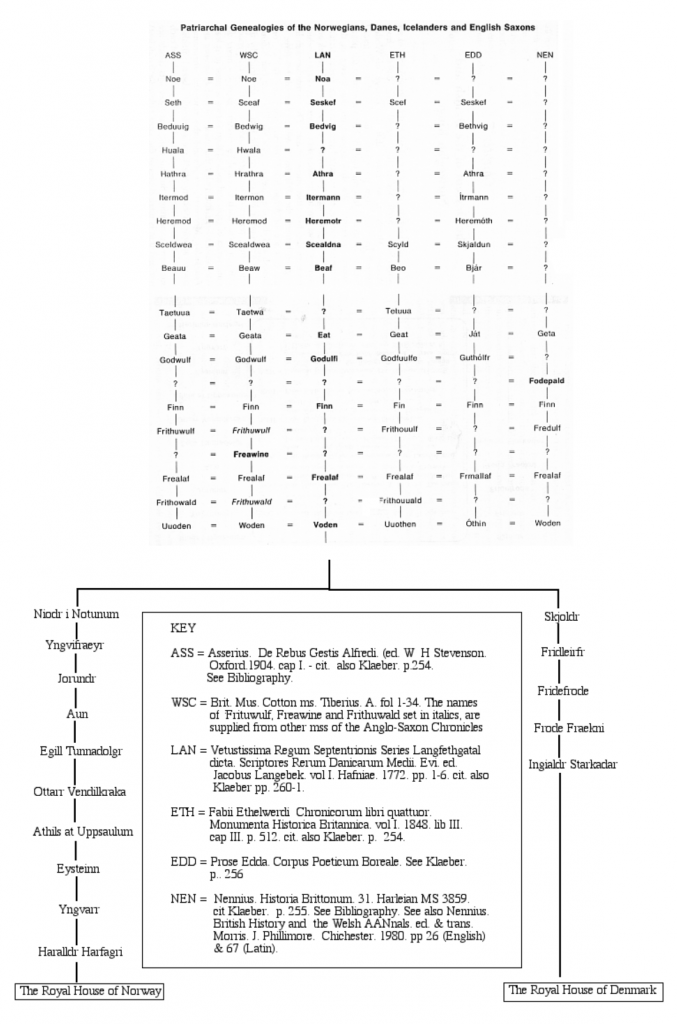
Later another group of descendants of Magog comes to Scandinavia. “The Swedish historian Johannes Magnus (1488–1544) stated that Magog migrated to Scandinavia (via Finland) 88 years after the flood and that his five sons were Suenno (ancestor of the Swedes), Gethar (or Gog, ancestor of the Goths), Ubbo (who later ruled the Swedes and built Old Uppsala), Thor, and German. Queen Christina of Sweden reckoned herself as number 249 in a list of kings going back to Magog.” (Wikipedia) It is hard today to prove his sources, yet it fits with other legends, only the names are different. However, Magog most likely had many sons born over several hundred years. Because all sources are so “young” it is hard to prove their authenticity.
The Icelandic historian Snorre Sturlason (1179-1241) wrote about immigration to Scandinavia, using the writings of other historians before him like the priest Ari inn fróði (the Learned), son of Þorgils, son of Gellir. Like many others, he is disbelieved by evolutionists because of how the leader Odin is described with godly powers. However many in Sweden and Norway are descendants of him. The stories and places are all real. He divides the land the same way the Book of Jubilee does with the river Tanais (coming out from the black sea) dividing Europe from Asia. The European side was where Magog is said to have gone.
He does not mention Magog but tells about a group inhabiting Sweden (not the first group to come) who traveled from the Black Sea through what we now know as Germany and Denmark before settling in Sweden. Along the way, they created settlements and created many of the names of places now in use. He writes they finally left the black sea territory, and Turkland (modern Turkey) because the Romans were threatening them. We know the Romans came to the area of the Scythians north of the black sea around 40 BCE. This group therefore left for Sweden fairly late compared to all the others. They are identified by most as the Goths. Sturlason explains in his work EDDA that their arrival changed the language in the region. Upon arrival, they married the women there, and some women married the sons and their descendants became so many, he explains, that the new language spread throughout Saxland and Northern Europe and became the normal language. The Germanic language was not the original language of the area, although it is connected. Germanic shows similarities with ancient Norse, Celtic as well as proto-Iranian, all coming from the proto-indo language tree. The arrivals from the black sea would have spoken a language derived from the proto-Iranian, and the mixture with ancient Europe may very well be the new Germanic language. This is the language that spread as Snorre said at that time. First galls and then the germanic speaking people settled in what we today call France, Germany, and Britain, as well as Belgium, Netherlands, and Switzerland. Genetics show that all inhabitants of these areas are related even though some come from different groups with slight genetic mutations.
MAP OF THE EXPANSION OF THE POSSIBLE EUROPEAN TRIBES OF MAGOG:
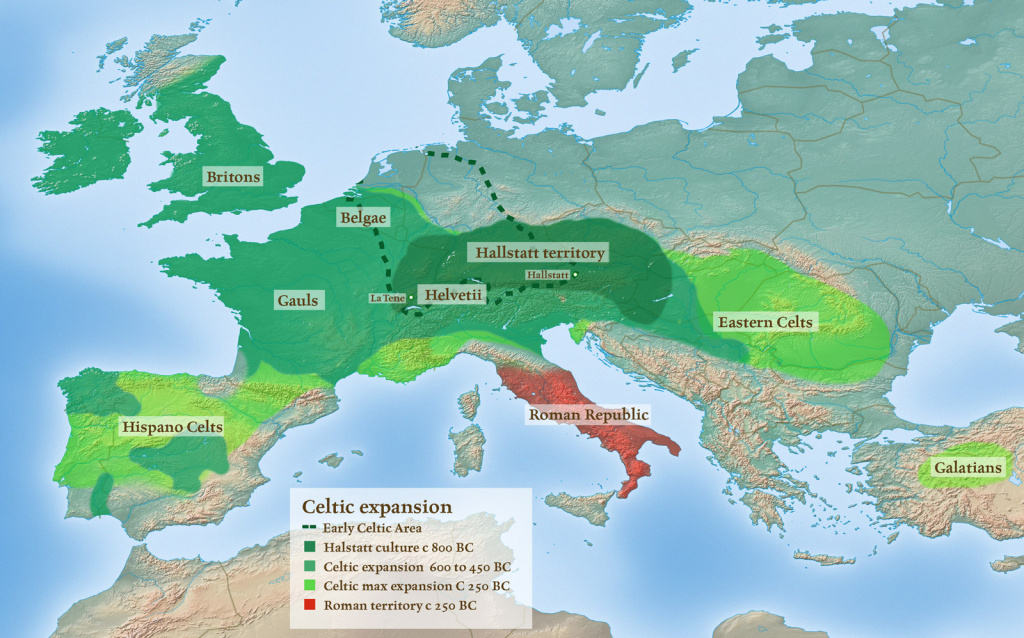
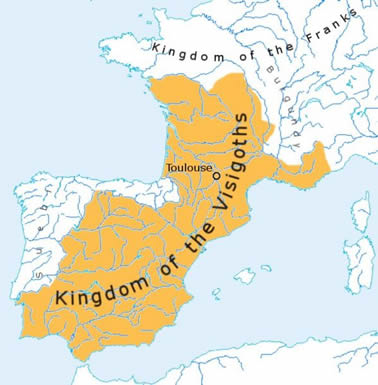
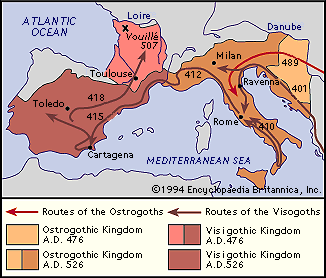

Another (of many) settlement groups of Europe: The Longobards
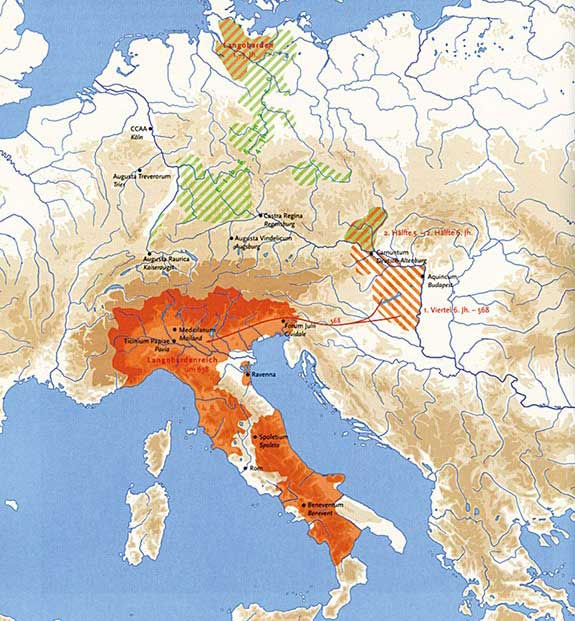
The tribes in Europe, especially the northern tribes, often moved their settlements south. It is not known if they are too, descendants of Magog or another of Japhet’s sons.
They did however genetically mix with what is most likely the tribes of Magog as they have two distinct different genetic forefathers like many other tribes in Europe.
Scythians
Not only did old Irish chronicles connect the Scythians with Magog, but so did the famous Jewish historian Flavius Josephus who lived in the first century. He said that the Scythians were a tribe of Magog. The Scythians were infamous for their behavior, and their history comes way back. The Greek historian Herodotus (484 BC) said half a millennium before: “None who attacks them can escape, and none can catch them if they desire not to be found“. He also revealed something very important about this group which is that they were nomads and came to the black sea during winters and lived elsewhere during the summer. Herodotus famously showed he knew nothing of Northern Europe at the time, but he did visit the Scythians which he did not like.
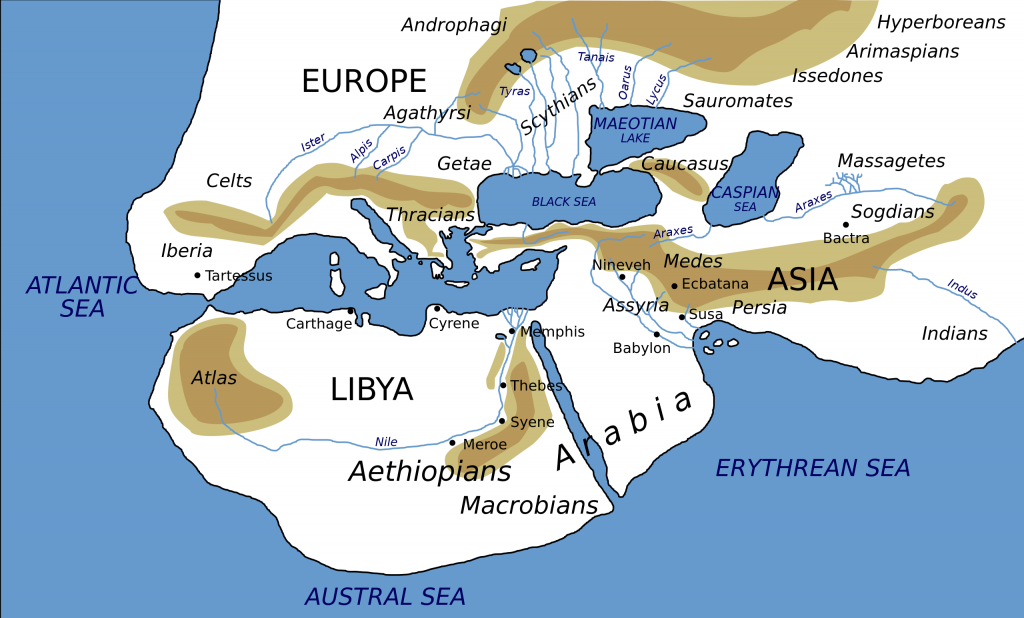
Herodotus might not be the most beloved historian, and his report shows the “box-mentality” of evolutionists today about human migration might have caused their idea of the history of Europe to be confused. He wrote: “For when men have no established cities or fortresses, but all are house-bearers and mounted archers, living not by tilling the soil but by cattle-rearing and carrying their dwellings on wagons, how should these not be invincible and unapproachable?”
Hippocrates wrote: “‘The Scyths… have no houses but live in wagons. These are very small with four wheels. Others with six wheels are covered with felt; such wagons are employed like houses, in twos or threes and provide shelter from rain and wind … The women and children live in these wagons, but the men always remain on horseback.’
There were several different tribes called Scythians, but living separately in what is today Ukraine.
The Irish and other sources telling early Scythians came there, show perhaps that the reason they came during winter to the black sea was because it was because of the climate in Northern Europe. They were not just nomads, they traveled with the seasons and only lived in the north during winter. Those living in the Near East and the Medetarrean did not have these kinds of needs. Another researcher notes: “The Scandinavian peoples, the Celtic peoples, and the Scythian peoples actually had a common origin, as evidenced by the presence of Kurgan”. (Nicolini Giuseppe, Independent Researcher
Rev.3 February 2022 Acadenia.edu)
The groups emerging in Northern Europe, like the Ostrogoths, the Lombards, the Vandals, the Heruli, and many others, all share a common trait. They move between the South and the North. The Lombards (Norwegians) even settled for a longer time in Northern Italy. The Visigoths took residence in Spain and created their own empire there between 418 and 711 AD. The Ostrogoths in the Balkans and even Rome. All moving southward and northwards. The explanation for this behavior is most likely climate and trade. Seeing the behavior of “Magog” in the comment era might reveal the situation after Babel as well. And this time it was even worse, with glaciers and the cold climate. They were therefore nomads, travelling with animals and tents. Sometimes taking residence in the south and returning north.
The Scythians were several of these tribes to the annoyance of many nations, including Greece and Medo-Persia. The steppe people and the farmers were related, as well as the hunter and gatherers. The first to leave for Northern Europe left around 2500 years before the group mentioned by Snorre, showing how easily the ones who mostly stayed south and those who remained in the north’s gene would mutate slightly in each their direction, but still be descendants of Magog. The Bible pointing to the coasts, and history pointing to Magog going with their “bands” south to Spain, France, and Italy show us that Magog is spread throughout the whole of Europe. And the last great group of Scythians to leave the Black Sea, has, as DNA shows us, spread throughout eastern and central Europe to the Baltic Sea, the area initially given Magog according to the Book of Jubilee.
So far we see Magog sons divided and spread within the following groups: The Celts, The Scandinavians, The Germans, The Franks, the Slavs, the White Croats, Western Scythians, Eastern Scythians, Kievan Rus, Ostrogoth, Visigoths, Vikings, Vandals, Lombards, Svea, different Scythian groups and intermixed with the populations of Spain, Greece, and Italy. All are connected through genetic haplogroups and history. Part of these groups could also be from the tribe of Gomer. Some of Magog’s descendants have been fairly isolated over time, others have constantly been on the move between North and South, East and West, some have permanently chosen residence in the south, and some remained in the north.
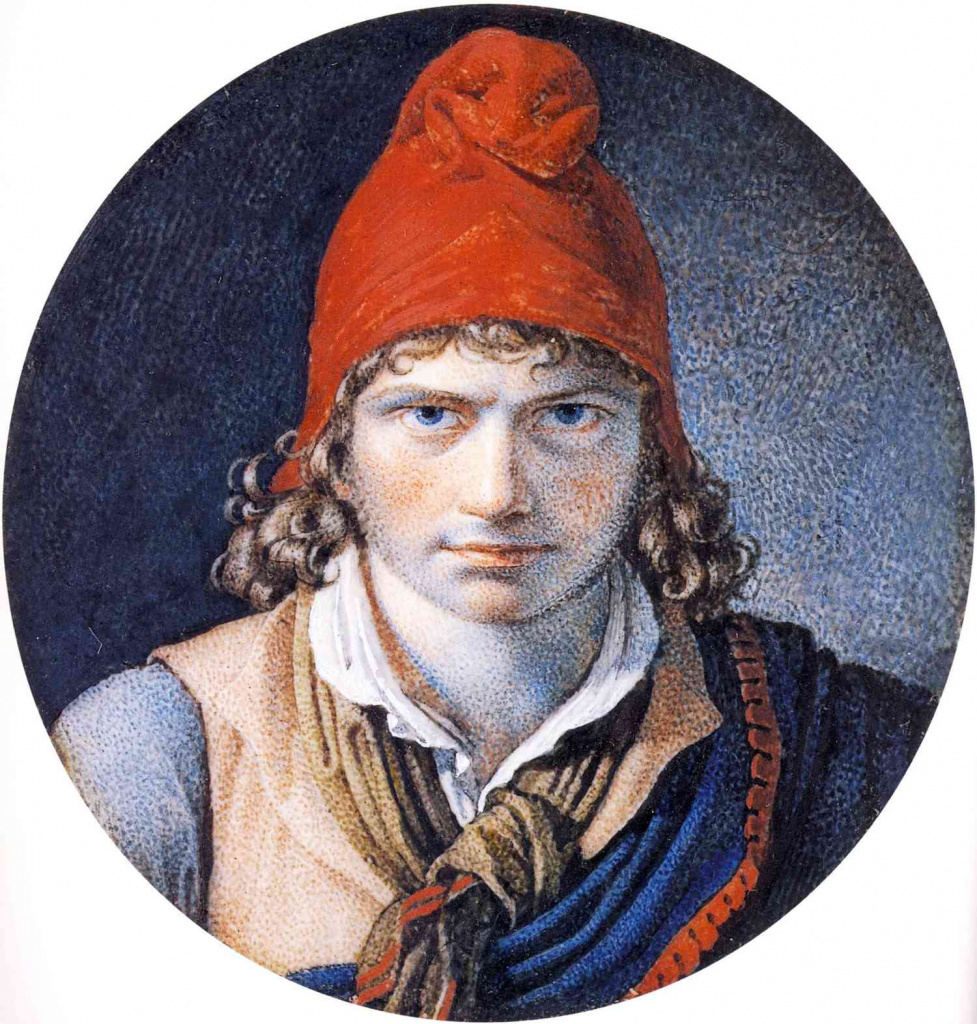
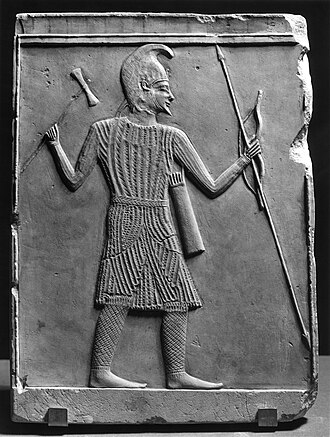
Is the Scythians Ashkenaz?
Some Jewish writings from the Middle Ages started the trend that the descendants of Germany were descendants of Gomer’s son Askenaz, and European Jews still call themselves Ashkenazi after this son. It might sound better than Magog Jews, but is it correct? They thought the Assyrian name Aškuzai/Iškuzai for the Scythians fitted better with Ashkenaz. The Scythians never called themselves the Scythians, the name is thought to reference their weaponry and is used by ancient historians. They called themselves Skudat, which probably means “archers”. The Persians called them Sakâ and the Greeks Skythes or Skythai. The Bible itself, together with history, might go against this idea that the Scythians are Ashkenaz. The Bible never mentions the Scythians, but it does mention Magog and Ashkenaz on two different occasions. Ashkenaz was part of the “northern alliance” destroying Babylon: “For, lo, I will raise and cause to come up against Babylon an assembly of great nations from the north country: and they shall set themselves in array against her; from thence she shall be taken: their arrows shall be as of a mighty expert man; none shall return in vain” “Set ye up a standard in the land, blow the trumpet among the nations, prepare the nations against her, call together against her the kingdoms of Ararat, Minni, and Ashchenaz; appoint a captain against her; cause the horses to come up as the rough caterpillers. Prepare against her the nations with the kings of the Medes, the captains thereof, and all the rulers thereof, and all the land of his dominion. And the land shall tremble and sorrow: for every purpose of the LORD shall be performed against Babylon, to make the land of Babylon a desolation without an inhabitant (Jer 50:9 & Jer 51:27-29).
This alliance was part of the Medo-Persian conquest of Babylon and its territory. They lived north in what is today Iran and Urartu. The reason we know this is likely not the Scythians is that Persian and Greek history tells us that the Medes were often in conflict with the Scythians, even at war with them. The Scythians had previously assisted Babylon. Darius the First led a military expedition into parts of European Scythia in 513 BC. Only a few years before Medo Persia had attacked Babylon with its alliance, defeating the Scythians was part of their military campaigns. The Scythians had
invaded Media, revolted against Darius, and sabotaged the trade routes in the area. The war against them took place among others, in the territory now called Ukraine and surrounding areas where they had spread to. Herodotus writes about this in the book ‘The histories’. The story tells that Darius went into Eastern Europe just to chase the Scythians away. Because they lived in the area as nomads, he said, there were “no cities or fields to burn” which made the battle difficult to win.
What we learn from this is that the Scythians are likely not Ashkenaz as some claim today. Germans are not Ashkenaz, their genetics are the same as the rest of Europe.
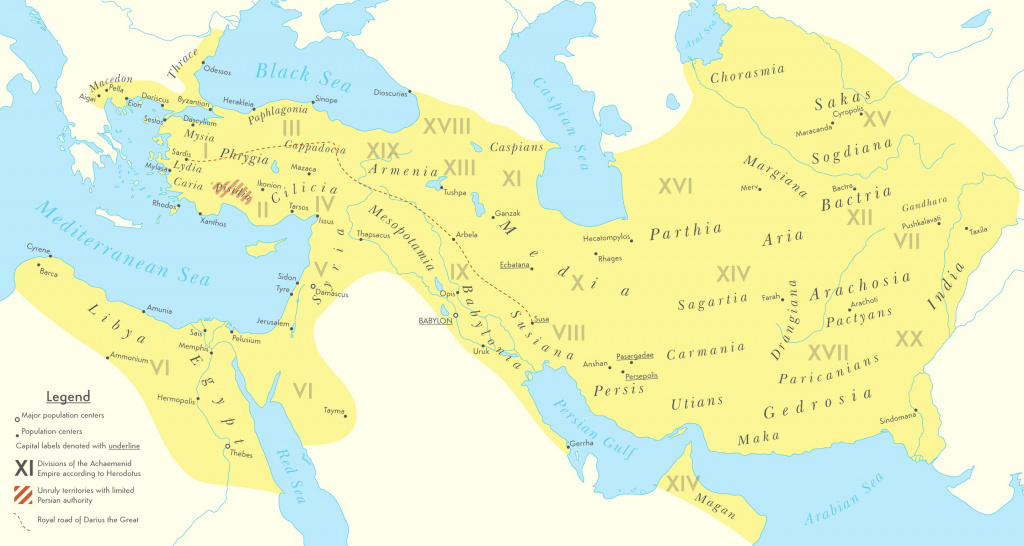
The territory of the Kurds, Armenians, and Azeris still have a large group of descendants of Israel. This fits the Biblical description of where the first Israel was displaced.
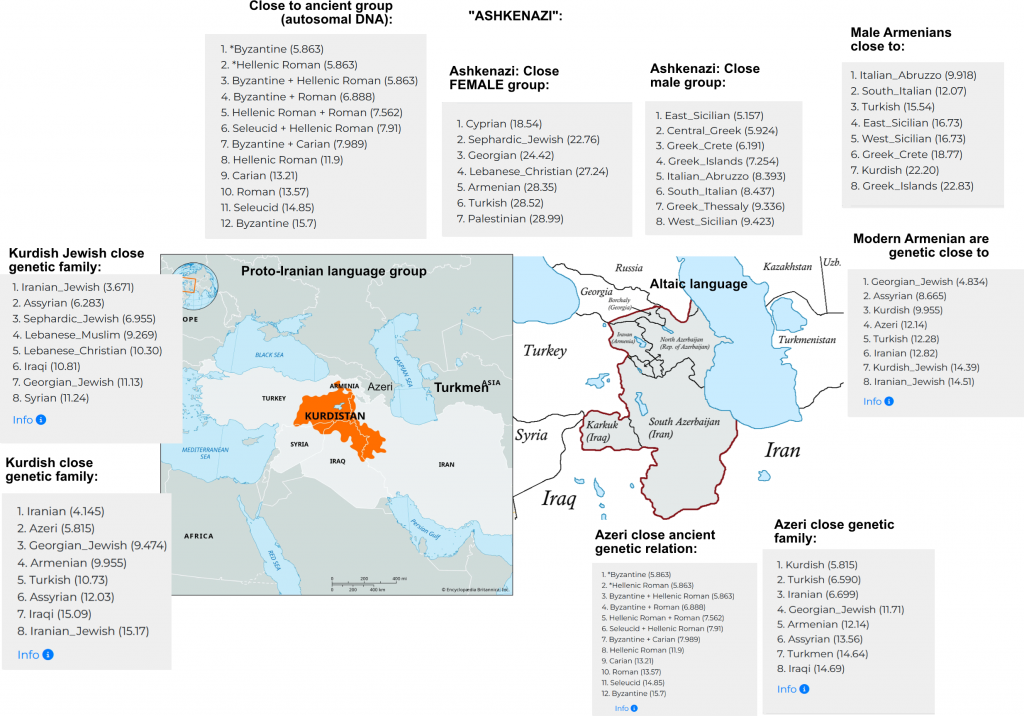
But because the tribes of Gomer and Magog are deliberately being switched to hide the main aggressor in the Gog and Magog war, the idea that Germany is Ashkenaz is pushed by both Zionists and evangelicals. The Caucasus territory, modern Armenia and Georgia, has traditions that they are the descendants of Gomer’s sons Ashkenaz and Togarmah. They are too few to be all of Gomer’s descendants, but their ancient traditions are worth respecting just as the traditions of Magog are in Northern Europe. The claims of the Armenians and Georgians also match the Bible verse we just looked at as well as the Bible verse saying Togarmah is in the north. There is no evidence from the Bible that Gomer spread west. According to the Book of Jubilee, he got the land north of the Caucasus. The Armenian historian Yovhannes Drasxanakertc’i (1.15) in his book History of Armenia writes Ashkenaz a forefather in the Armenian land. (Gmirkin, Russell (2006). Berossus and Genesis, Manetho and Exodus: Hellenistic Histories and the Date of the Pentateuch) A Jewish philosopher and rabbi named Saadia Gaon suggests the Slavic nations.
So where does the Askenazi term come from, which seems to have fooled the entire Jewish and evangelical movement?
It appears from genetics that the ones calling themselves Ashkenazi Jews came from Italy, Greece, and overall southern Europe.
In the Babylonian Talmud written between 200 CE- 500 CE the name Gomer is rendered Germania, which is identified as Germanikia in other rabbinical literature. Germanikia was a land in Northwestern Syria (Turkish: Maraş; Armenian: Մարաշ) and Germanicea (Greek: Γερμανίκεια).
The place was once settled by Aram, son of Shem. And never by a European Germanic tribe. In the 6th century, the catholic historian Eusebius thought Ashkenaz was in Scandinavia because the name looked similar.
Make yourself feel at home?
It was not until the Early Medieval period that Jews in Europe started using the term Ashkenazi. Mostly because they believed their rabbi’s suggestions and there was no genetic testing back then. It appears that there was a custom of giving places the Jews settled in Europe Biblical names to make themselves feel more at home. Mostly the names were random. Spain was called Sefarad (Obadjah 20), France Tsarefat (1.Kings 17:9), and Bohemia was called the Land of Canaan. (Miller, Michael (2010). Rabbis and Revolution. Stanford University Press) Not only did the Babylonian Talmud writers and later rabbis reject Christ, but they called the place where reformation would rise for “Land of Canaan”. Between the year 1000-1300 ACE they began to call important Jewish settlements (Speyer, Worms, Mainz) in Germany for Ashkenaz. (Kriwaczek, Paul (2011). Yiddish Civilisation: The Rise and Fall of a Forgotten Nation, Berenbaum, Michael; Skolnik, Fred, eds. (2007). “Ashkenaz”. Encyclopaedia Judaica. Vol. 2 (2nd ed.)
Early Jewish communities rose in Greece and Italy already in the BCE era. They then were further displaced after Rome took Jerusalem in 63 BCE when thousands of Jews were taken as war prisoners. There was also unrest to displace them in 37 BCE and after the Jewish revolt in 53 BCE. Then Christian Jews fled during the Jewish-Christian persecution. Finally, the larger group was displaced around the time Rome destroyed Jerusalem. For over two millennia Jews have mixed with the populations where they ended up, which is seen genetically.
Conclusion: There is currently no evidence that Europe, and especially Germany, is Ashkenaz. What there is evidence for is that Ashkenazi Jews do not seem to have any relation to the tribe of Ashkenaz, unless it is through their Armenian/Azeri connection instead of their Roman or German connection. Calling themselves Azkenazi Jews is mostly an idea from the Middle Ages.
A group from the Caucasus region was said to come to Scandinavia during the Roman conquest of the Near East according to the Icelandic historian Snorre, however, he does not say they were either Scythians or Ashkenazi. When they arrived in Scandinavia it was said to already be populated. At best, Ashkenazian people could have immigrated to another territory and thereby created the rumors. Genetics show a close familiarity between the Northern European tribes, so more genetic research from a Biblical perspective would have to be done to conclude if Ashkenaz went to Scandinavia.
‘Answer in Genesis‘ theory
The creationist foundation ‘Answer in Genesis’ is currently fronting the idea that Ashkenaz and Gomer populated most of Western Europe. One of their sources is a book from 1732 written by someone very well known to all Freemasons, Scottish reverend James Anderson, D.D., who in the early lodge era of Freemasonry wrote the compiler of the celebrated Book of Constitutions. (https://www.universalfreemasonry.org/en/encyclopedia/anderson-james). In his book ‘Royal Genealogies; or, the Genealogical Tables of Emperors, Kings, and Princes, from Adam to these times’, he claims to record a kingslist of German kings going all the way to Ashkenaz. (https://archive.org/details/bim_eighteenth-century_royal-genealogies-or-t_anderson-james_1732/page/n545/mode/2up)
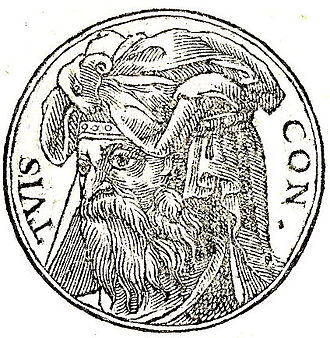
He was said to have ruled in Germany for 176 years.
He again got his history from Johannes Aventinus (1477 – 1534), who despite living in the middle of the German Reformation and befriending reformers remained Catholic his whole life. He was asked to write the history of Bavaria and is said to have gathered several sources for his work, yet there is no remains of these sources today besides his own book. He claims to have a record of the first ruler of Germany called Tuitsch (son of the sky), which is the same James Anderson D.D claims is Ashkenaz. So although historical sources, there is no evidence besides speculation by Anderson. Anderson’s ideas are repeated to this day by evangelicals and Jews.
Anderson’s writings came not long after the book of Jasher also surfaced, and most followed the same understanding of Gomer taking Western Europe. However, again, among all ancient writings, most of the ones tying Gomer to Western Europe are from the Middle Ages. The oldest book found, Book of Jubilee, says it was Magog. In the end, both tribes could have been mixed in that part of the land. So long as the Bible says not just Magog, but the land of Gog, it references Europe either way. And when the Bible says Gog, the land of Magog, the Bible itself says that it is mainly the tribe of Magog who is dwelling in that land.
Why the switching places are done by Catholic colors as well as the early Scottish Freemasons is better left for those into conspiracies.
Ezekiel and Magog
We are first introduced to bands of Magog in Ezekiel. Around the same time God’s prophecy judgment upon many nations. Most of them are known and can be identified. The mentioning of Israel’s enemies as Magog appears new in the setting of Judah’s situation at the time. For long Israel fought against the Assyrians, the Midianites, and the Moabites to mention a few. They were all known enemies. Now it speaks of Magog coming up against Jerusalem.

The many tribes and fighters attacking Israel in Ezekiel’s days, are known. One power we know was involved appears at first glance not to be mentioned. What do other historical sources tell us that can identify a possible aggression from Magog in the time of Ezekiel that would make a future judgment announced to Ezekiel relevant? Ezekiel had been taken captive by Babylon, he had seen gruesome war, and he did not initially need to be told of another unrelated war in some distant future. This is why we need to see the relation between the future war of Magog and how the judgment over them will comfort God’s people in their day. Babylon are not Magog, because they are mentioned as themselves in Ezekiel (They were mostly Semite). To understand better we need to go a little bit back in time. Between about 626 – 607 BCE, the conquest of Assyria took place. The Scythians were for a while allied with the Assyrians. However, the Scythians swapped sides and helped Cyaxares and the Medes in the war against Assyria and then went on to help Babylon. In 610 was the battle of Harran, in 612 was the battle of Nineveh, and in 614 the battle against Assur. In all these battles the Scythian kingdom of the Black Sea supported the Medo-Babylonian army. (Loehr, Max (1955). “The Stag Image in Scythia and the Far East”, Sulimirski, T. (1954). “Scythian Antiquities in Western Asia”, Jacobson, Esther (1995). The Art of the Scythians: The Interpenetration of Cultures at the Edge of the Hellenic World.) They were also in for the battle of Carchamish in 605 BC. They then favored the Neo-Babylonian empire. They helped Babylon with the annexation of Judah in 557 BC (Dugaw, Lipschits & Stiebel 2020, p. 81). Jerusalem fell in 587 BC. If they helped with this is unknown but likely Scythians were in the Babylonian army then as well. They supported a lot of the other battles of Babylonia. But could the Scythians aiding Babylon, and being famous for their barbaric fighting, be classified as one of the nations coming up against God’s people in Ezekiel’s days? Absolutely. Then why were they not mentioned if they were part of the Babylonian alliance? Likely they were, only God used the name of their forefather, Magog, and not some name they had given themselves. God’s eyes look to their origins but also to what they will do in the future, hence the prophecy of God judging them in the future. In Ezekiel, we see God almost only using the name of the forefathers of all the nations and bands and not what they called themselves. It is also plausible that Judah called them Magog at the time. Remember all others have received some judgment already, but Magogs judgment is placed in the future. Why was he not judged instantly? In a way, they were, as they were later attacked by the Medes, but it could also be because their crimes had only just begun. Magog is prophesied to return to God’s land before their final judgment.
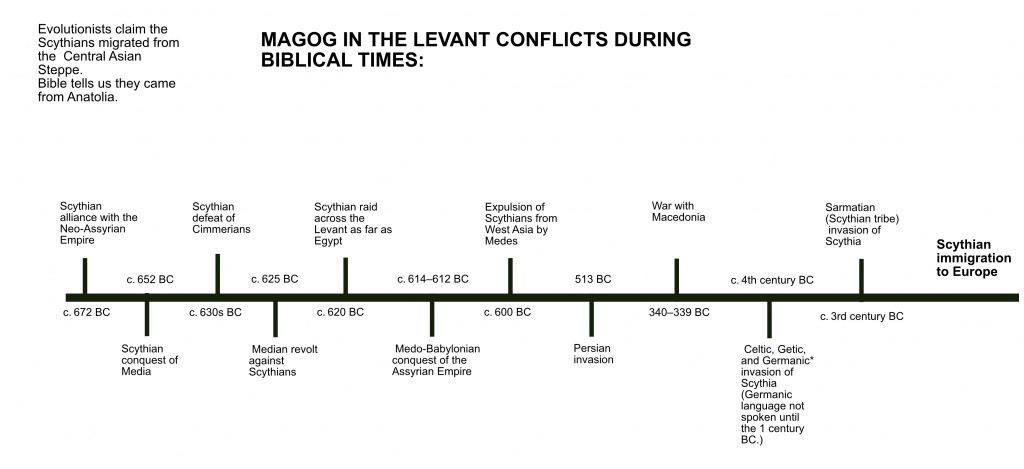
Conclusion: The Scythians (the Magogs) were in alliances with the Medo-Babylonian and Neo-Babylonian conquests, but were later in conflict with the Medes and not part of their northern alliance when this alliance conquered Babylon around 539 BCE. The Scythians had been seen as a problem and the Urartu and Azkenazi became part of the “Northern Alliance” with the Medes and Persians against Babylon.
So Who Is Magog Today?
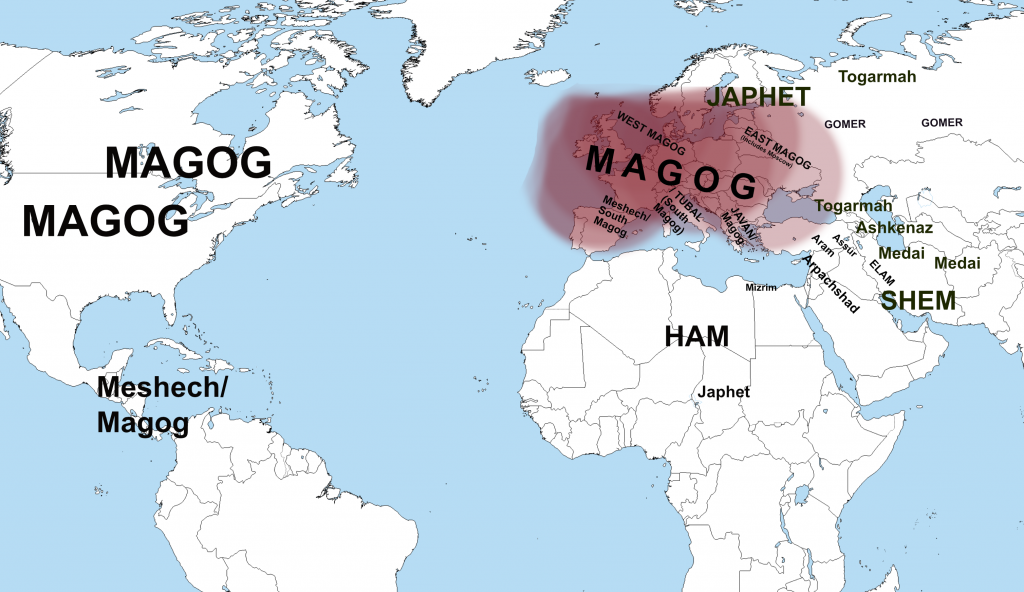
Based on everything we have looked at the tribes of Magog appear to mostly be in Europe, especially western Europe, France, Germany, and England as the biggest nations. And spread to Italy, Spain, Portugal, and smaller countries in Europe as well.
The Paternal I gene (ydna) and Paternal R gene (ydna)
According to studies so far, it is assumed the paternal I gene which was present among early Europeans and the R gene came from two different brothers of Noah. Because of this some creationist-genealogists think the I gene belongs to the first Europeans (Japhet) and the R gene is Shem’s tribe coming from the East.
Here the Bible prophecy regarding the sons of Noah becomes extremely relevant. “And he said, Blessed be the LORD God of Shem, and Canaan shall be his servant.
God shall enlarge Japheth, and he shall dwell in the tents of Shem, and Canaan shall be his servant” (Gen 9:26-27). It is Japhet that would be “enlarged” and even dwell in the area given to Shem, not Shem in Japhets “tents”. Noah’s prophecy happened, and a large part of Japhet dwelled in Shem’s “tent”/land from the beginning and until this day. Just as the Book of Jubilee claimed as well. Thus we should find genetic traces of them among Elam, Asshur, Aram, and Arphaxad which we do and which confuses some genealogists.
Why then, would there be possibly traces of Shem among early Europeans? We look more into a variety of possibilities in the next chapter as to how the I gene can be Japhet as well as the R gene. The most important is to not make a conclusion that goes against the Bible, and other historical sources. The idea presented by some creation-genealogists is that war, famine, and immigration wiped out most of Japhet in Europe, but the bible tells us of a large Magog in the end days provoking God, Noah speaks of Japhet “enlarged”, and nowhere does it say anything about Shem taking over Japhets land. We will look at why the switching of genes goes against scripture and history and look at a possible special explanation in a special chapter talking about haplogroups and paternal lineage.
MAGOG – WORLD BULLIES OR PEACEMAKERS?
God seems to not speak much more of Magog in the Old Testament. But from the moment Babylon took Judah, Magog has been around. Japhet’s sons then continued their battle against God and God’s land. The Medes were Japhets son Medai. They were part of the Medo-Persian empire that took Judah. The Greek empire, the Bible tells us is Japhets son Javan (the name Javan is used in the bible for this empire). Then Bible prophecy shows us a horn coming from the West, which is also Japhet. This time from Rome and Western Europe. The alliance of Meseach-Tubal-Magog came from the West. Then the ten horns or toes, again tribes of Magog represented. They are also the United States of America which is in large part a British, Irish, French, Scandinavian, and Spanish colony. The power of these European horns will continue till Christ’s second coming where He will put an end to the “time of the heathens”. Will Magog conquer the land of Israel, or have they already? Please continue reading to hear about the Great War. But first, we need to look at paternal genealogy.
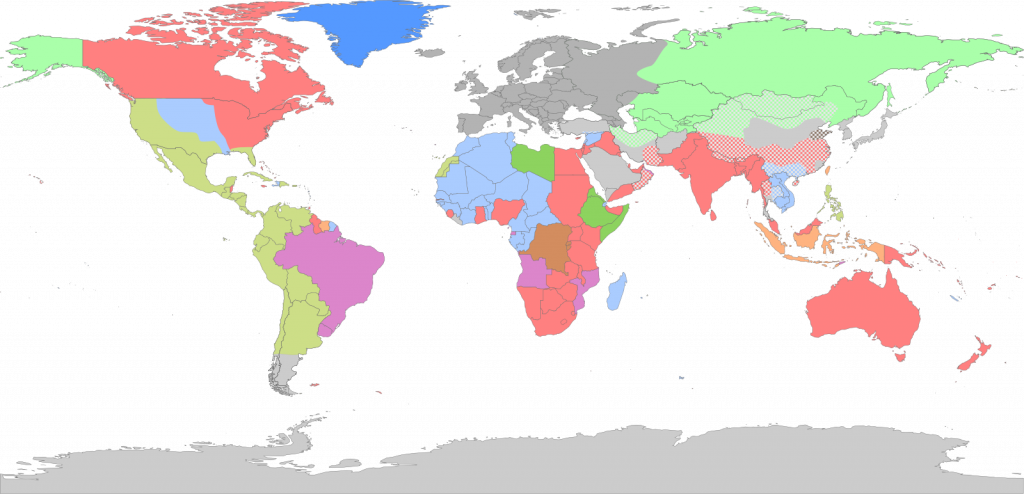

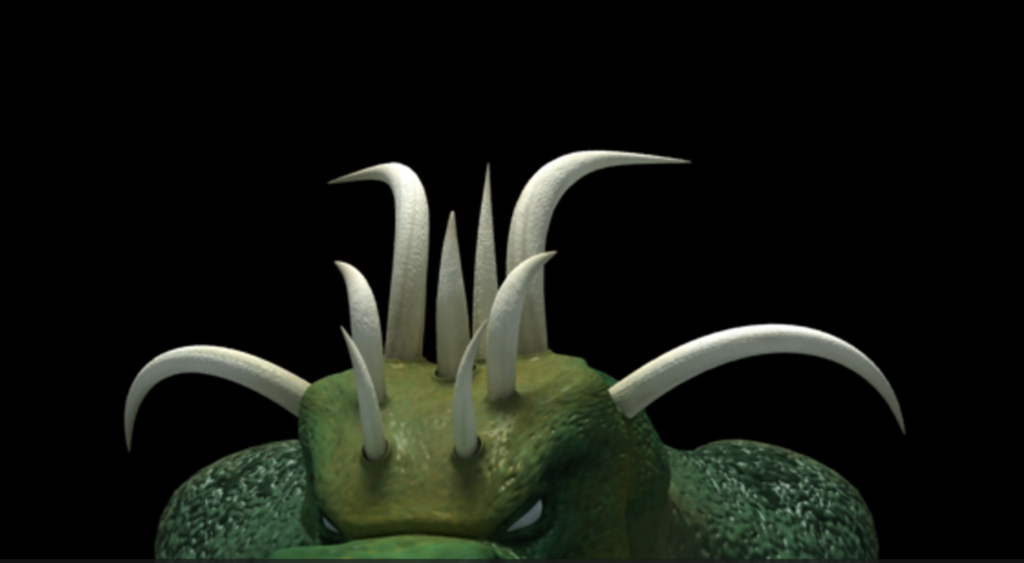
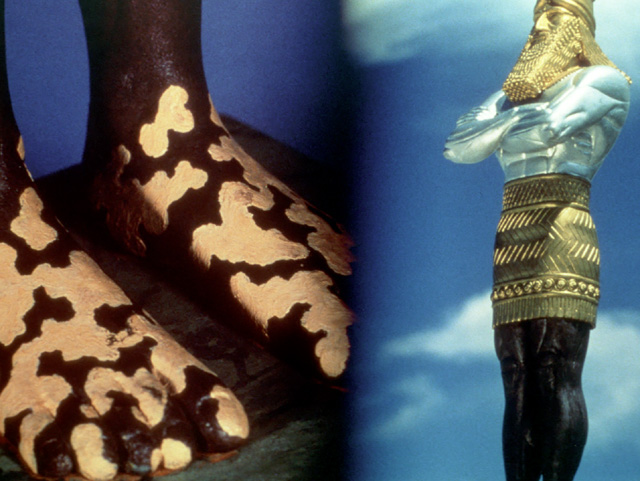
1.Ostrogoths, 2. Franks, 3.Suevi, 4.Angelo-Saxson, 5.Lombards, 6.Visigoths, 7.Vandals, 8.Alamanni (or the Huns some would argue), 9.Heruli, 10.Burgundians
CONTINUE READING THE NEXT CHAPTER: GOG AND MAGOG PART FOUR
(You can also read my haplogroup theory here)


